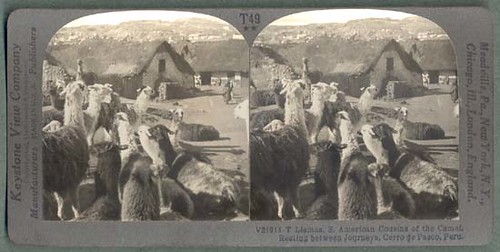I should preface this review by noting that I'm a sucker for a good mother-daughter or intergenerational female relationship story. Maybe it's because I come from a family where the women outnumber the men, or because my mom's family is close, both relationally and geographically. I'm sure there's a psychological reason at play here, but I don't really care what it is. I like mother-daughter stories, and
Hanna's Daughters is no exception.
Marianne Fredriksson's novel is framed by Anna, the daughter of Johanna and granddaughter of Hanna. Anna narrates a visit to her mother, who is in end-stage dementia and lives in a nursing home. Anna spends the night at her parents' home, caring for her elderly father, and begins to look through old photographs late in the night. She sees a photo of Hanna, and remembers the grandmother she knew but never understood. The next portion of the novel tells Hanna's story, followed by a little narration from Anna, then Johanna's story, and finally Anna's story up until the point at which the novel opened. Though the stories overlap, they are told independently of each other.
The novel is set in Sweden, with Hannah's story in the late 1800s, Johanna's in the early to mid 1900s, and Anna's narration sometime in the late twentieth century. The women's lives intersect with border disputes between Sweden and Norway, the world wars, and the advent of the modern age. Hanna retains her rural upbringing, superstitions and all, all the way to her death sometime in her nineties. Johanna is politically involved, fighting for socialist democratic reform, and is thoroughly accustomed to the city. Anna is able to remain in school, unlike her mother or grandmother, and teaches and writes. Each woman struggles through relationships with husbands and sons, fighting to keep the good in their men alive and strong. They are each betrayed and beloved by their men at different points. As we follow the narrative, making discoveries about this family history, we are able to see what Anna, Johanna, and Hanna cannot--that they are all inseparably linked and startlingly similar. What separates them is not so much their personalities but their upbringings in completely different settings.
The novel's only shortcoming, in my opinion, was an occasional confusion of the sequence of events and the narrative voice. Perhaps this was intentional on Fredriksson's part, or perhaps the translation is at fault; I'm not sure. A map of Sweden and the towns in which the novel is set, as well as a family tree, would have been helpful. Ultimately, though, the story arcs through beautifully, and the framework of Anna's narration, in spite of being a literary structure common to the point of being cliche, works, because Anna is not just a narrator, but a character that we get to know and even love.
What's the verdict? This book is a really good read. I also enjoyed reading more about Swedish history and getting to know a bit more about a part of the world with which I'm not very familiar. It's interesting, isn't it, that I can live in a completely different part of the world from these characters and even the author, yet still connect so much to the characters. That, to me, exemplifies the strength of the writing and of the story. If you read it, I think you'll feel the same way.
Hanna's Daughters is available for purchase here.


























































